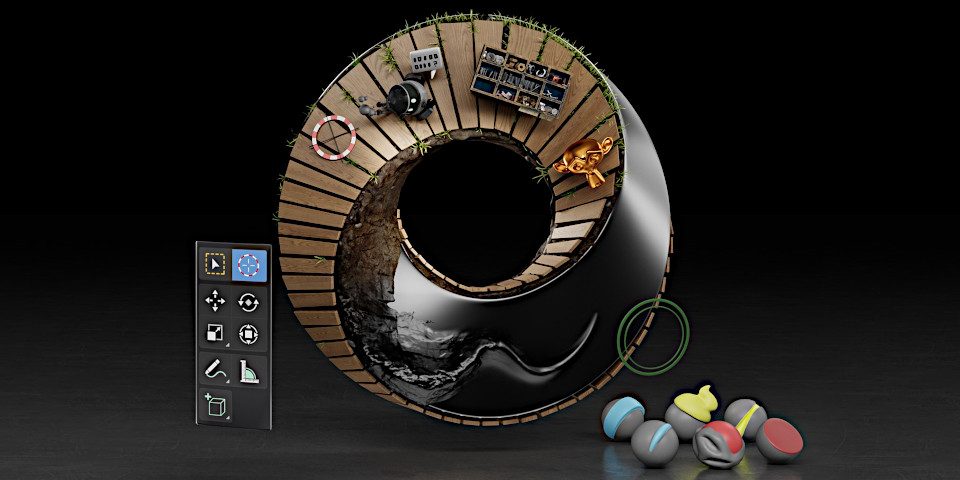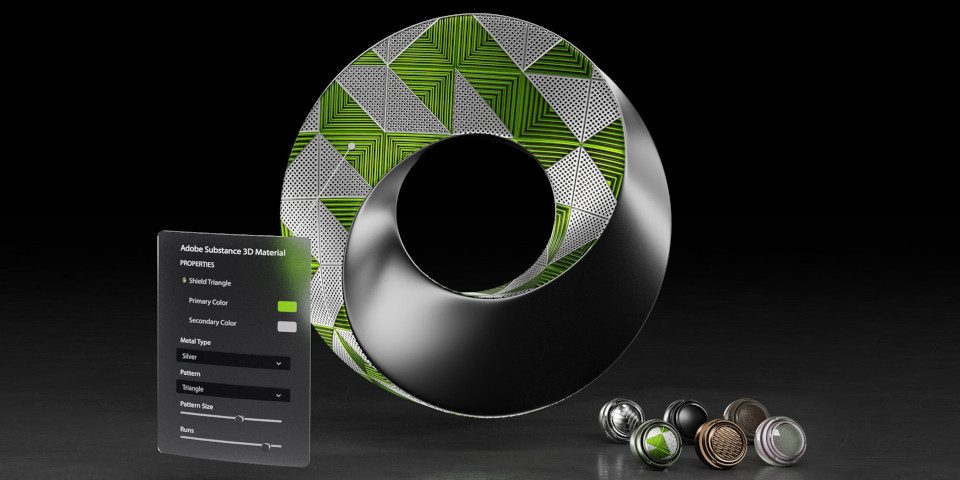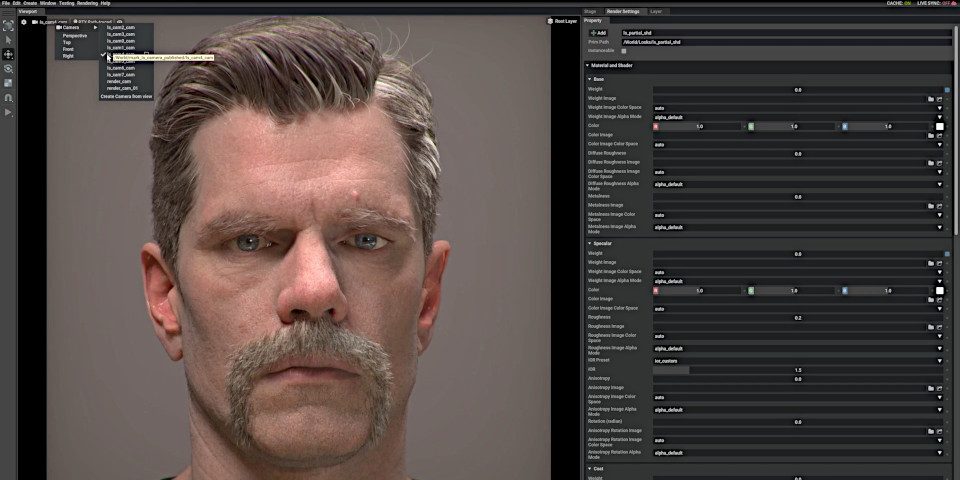Nvidia unveils new Substance 3D plugin for Omniverse

Nvidia has announced a Substance 3D plugin for Omniverse, which will enable users to edit materials in Substance format directly inside the real-time collaboration platform, currently available free in open beta.
The connector is one of a number of changes to Omniverse announced at Siggraph 2021, along with new ubermaterial OmniSurface and an experimental extension for generating 3D cars from single source images.
Outside the Omniverse framework itself, an alpha branch of Blender with support for the Omniverse Universal Material Mapper will be available later this summer.
A USD-based collaboration platform for VFX, game development, design and visualization
First announced at GTC 2020, and currently available free in open beta, Omniverse enables artists and designers anywhere in the world to collaborate on projects in real time.
The set of cloud-enabled apps enable users to see changes made to shared 3D assets by other artists, working in other software, in a livestreamed photorealistic real-time view.
Data is exchanged between compatible CAD and DCC applications and Omniverse in USD format, with connector plugins available for tools including 3ds Max, Maya, Revit, Rhino, SketchUp and Unreal Engine 4.
Omniverse itself has a modular structure, with components including Nucleus, its server-side services, Kit, its framework for viewing and editing scenes, and Connect, which connects the software to other DCC tools.
The platform comes with its own photorealistic render engine, RTX Renderer, which taps into the hardware-accelerated ray tracing capabilities of Nvidia’s current-generation RTX GPUs.
As well as the Omniverse core, Nvidia has released frontend applications for specific tasks, including Omniverse Create for scene layout and editing, and Omniverse View for scene review.

New Substance 3D connector in development
To that, Nvidia has announced a new Substance 3D plugin, which will enable users to edit procedural materials in Substance 3D Designer’s .sbsar format directly inside Omniverse.
The new plugin, which is being developed in collaboration with Adobe, will strengthen integration between Omniverse and the material authoring software in Adobe’s Substance 3D Collection.
While it is currently possible to live link Substance 3D Painter to Omniverse, the workflow is based on exported texture maps, rather than Substance materials themselves.
No release date has been announced for the new plugin.
Native Blender support inches closer
In addition, support for Blender within the Omniverse ecosystem inches closer, with the software’s new USD importer due for release in Blender 3.0 later this year.
The importer, developed partly by Nvidia engineer Michael Kowalski, will complete Blender’s USD pipeline, USD export having already been added in Blender 2.82, making a live link to Omniverse possible.
Nvidia has also announced an experimental alpha branch of Blender 3.0 with “more advanced USD and material support”, including the Omniverse Universal Material Mapper.
The build will be available “in a few weeks” from both the Blender website and the Omniverse launcher.

New OmniSurface ubermaterial and GANverse3D – Image2Car extension
New features already available in Omniverse Create include OmniSurface, a new ubermaterial for recreating ‘imperfectly perfect’ materials like human skin.
Users can dial in fine details like pores, hairs and blemishes and render the results in RTX Renderer.
Omniverse Create users also get GANverse3D – Image2Car, an experimental new extension that will form part a set of AI-trained tools Nvidia is now calling the ‘Omniverse AI Toy Box’.
The tool, which is based on this Nvidia research project, generates low-resolution 3D car models suitable for background use in visualisation work from single source images.
Omniverse now added to the Nvidia Developer Program, but commercial release pushed back
In addition, Nvidia is bringing Omniverse to the Nvidia Developer Program, making it easier for third-party developers to write connectors for their own software, or integrate services with Omniverse.
Registered developers will get access to over 200 pre-built extensions, including source code, plus additonal tools and training.
However, the release of the commercial version of the platform, Omniverse Enterprise, originally due to launch this summer, has been pushed back, and will now roll out in early access in “fall 2021”.
Availability and system requirements
Omniverse is currently available as a free public beta for Windows 10 and CentOS 7/Ubuntu 18.04 Linux. It requires a current-gen Nvidia RTX GPU. You can find system requirements for the integration plugins here.
Omniverse Create and View can be installed from the same installer as Omniverse itself. Create is available for Windows 10 and CentOS 7/Ubuntu 18.04 Linux; View for Windows 10 only.
Omniverse Enterprise is now due to launch in early access fall 2021. You can find pricing details here.
Read Nvidia’s blog post announcing the latest changes to Omniverse
